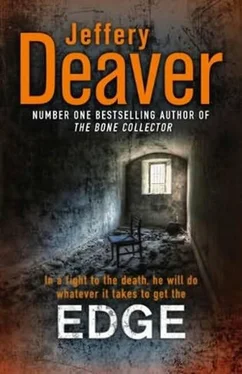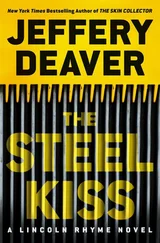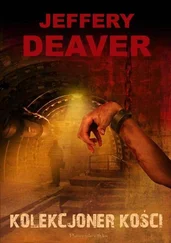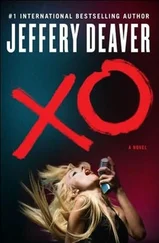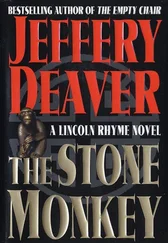How does this affect my job as a shepherd?
Since neither I nor opponents like Henry Loving know what moves the other will make, I continually apply game theory in trying to pick the best strategy to win-strategy being not an overall approach to a contest but a specific move, like “Pawn to Rook Seven” or selecting a fist in Rock, Paper, Scissors.
Here, my strategy was to play the flytrap, believing that Henry Loving was more likely than not to make a rational choice: to go for the bait.
But game theory exists because of uncertainty-on gaming boards and in real life. Perhaps Loving would sense this was a trap and, knowing that I was preoccupied there, would use this opportunity to find the real safe house the Kesslers were in, while I was busy here.
Or would he try a different strategy altogether, something I couldn’t figure out but which was even now brilliantly outmaneuvering me?
I was getting closer to the nation’s capital. I noticed behind me a black SUV I might have seen earlier. Westerfield? Someone else? I called Claire duBois again. “I need a crowd. Festival, parade. In the District. I don’t think I have a tail but I want to make sure of it. What do you have for me?”
“A crowd. Okay. How big a crowd? There’s the game at the stadium-but, sorry to say, that ’s not going to be much of a crowd, given how they’re playing this season. Then there’s a romance author and the cover model of her books-they’re signing at a Safeway in North West.”
How did she know this without looking anything up?
“How many people go to romance book signings at grocery stores?”
“You’d be surprised.”
True. “But I want bigger. And downtown. Make it a thousand people, plus.”
“Too bad it’s not spring. I don’t go for the cherry blossoms myself,” she told me. “If the blossoms did something while you were there, that would be one thing. But I never quite understood going to look at trees. Let’s see, let’s see…” I heard typing, I heard tinkling charms.
DuBois said, “There’s not much. A gay rights march up Connecticut in DuPont Circle. Preaching to the converted. Estimate four hundred… A Mexican-American parade in South East but it’s just winding down now. Oh, here we go. The biggest thing is the protesters outside of Congress. That’s about two thousand strong. I never know why they say that. ‘Strong.’ As opposed to ‘two thousand weak.’”
“That sounds good.”
The crowds were there to protest against, or support, a Supreme Court nominee, she explained. I was vaguely aware that the jurist-projected to be confirmed by one or two votes in the Senate-was conservative, so the left was busing in folks to protest, while the Republicans had marshaled their own troops to show support.
“Where exactly?”
She told me-near the Senate Office Building-and I disconnected and steered in that direction. In five minutes, with the sanction of my federal ID, I was easing in and around the demonstrators and past barricades that would stop anyone tailing me. The supporters of the nominee were on one side of a line, the protesters on the other. I noted the viciousness of the insults and even threats they flung back and forth at each other. The police were out in force. I recalled reading a recent series in the Post about the increasing polarization and aggressive partisanship in American politics.
My phone buzzed. “Freddy.”
“Where are you?”
“Trying not to run over Supreme Court nominee protesters.”
“Hit a few of ’em for me.”
“You’re on site?”
“We’re here, in the staging area.”
“Anything?”
“Nothing so far.”
“I’ll be there soon.” I now emerged on the other side of the demonstration, assured that I had no tail, and sped to a small garage we sometimes used, just north of Union Station. In five minutes I’d swapped Garcia’s official car for another fake one and was heading out a different doorway from the one I’d driven into.
Ten minutes later I was at the flytrap.
A new round of the game against Henry Loving was about to begin.
WE’D PICKED THIS location, a scruffy portion of North East D.C., because it was a perfect takedown site.
Some industrial parts of the District of Columbia, like this one, are as breathtakingly grim as anything Detroit or Chicago’s South Side can offer. The warehouse we leased for a song was in a marshy, weed-cluttered landfill crisscrossed with rusting railroad tracks (I’d never seen a train), crumbling access roads and a couple of sour-smelling canals. Our property was three acres of overgrown lots, filled with trash, clusters of anemic trees, pools of water the color of a sickly tropical lizard. In the center was an ancient warehouse with just enough evidence of habitation to make it seem like a credible safe house. Nearby were two small crumbling outbuildings, where tactical teams could wait for the bad guys; they offered perfect crossfire positions. The warehouse itself had bulletproof brick walls and few windows. We’ve used it a number of times, though only twice successfully. The most recent was last January, when I’d sat in a snowstorm for four hours, sipping increasingly chilly coffee from a flabby cup clutched in my stinging red fingers, until the hitter finally made his bold and, for him, unfortunate move.
I now drove through back alleys and fields, largely invisible to any surveillance from the perimeter. I parked some distance from the warehouse, beside the other federal cars, out of sight of the nearby driveways and roads. Then, my shoulder bag bouncing on my back, I walked through a stand of brush and beneath a rusting railroad bridge that was graffiti-free; even the gangbangers had no interest in this prime example of urban decay. I surveyed the area again, saw no sign of hostile surveillance and slipped through tall weeds toward the staging area. A glance at the ground-the broken twigs, overturned leaves and stones-told me that Freddy had brought with him at least six agents (all of them seemingly unconcerned that they left such clear evidence of their presence; I spent some time obscuring the most obvious signs).
Surrounding me was a world of trash and abandoned vehicles and rusting machinery and outright garbage piles. On my right, I could see a glimpse of a narrow canal, filled with bile green water and dotted with refuse and a dead squirrel or two, which I suspected had ended up there after taking a sip. Improbably, a small recreational power boat floated in the current toward the Potomac. Then the strip of foul water vanished from sight; a moment later I got to the command post and greeted Freddy and his people: six male agents in their thirties, large and unsmiling, and one younger woman, equally somber. The mix of these law enforcers was like the city itself: black, Latino, the minority white-the woman and an older, weathered male agent. People tend to think that the FBI is all dark suits and white shirts or the scary tactical outfits that make them look like science fiction movie soldiers. In reality, most agents dress informally: windbreakers, baseball caps and blue jeans. In the case of the woman, make that designer jeans, which I couldn’t help but notice fit very closely. All were in body armor.
Which I myself now donned.
Everyone seemed tense, though I could tell from their eyes that they were looking forward to engaging.
As I slipped on my com device earpiece and stalk mike, Freddy gave me their names and I paid attention, since I might need to differentiate them if the situation heated up. I nodded to each in greeting. I asked if there’d been any contact. The woman said, “We had a light sedan, gray or tan, go by the west perimeter, that road over there, five minutes ago. Didn’t pause but it was going slow. I’d guess ten miles an hour.”
Читать дальше
